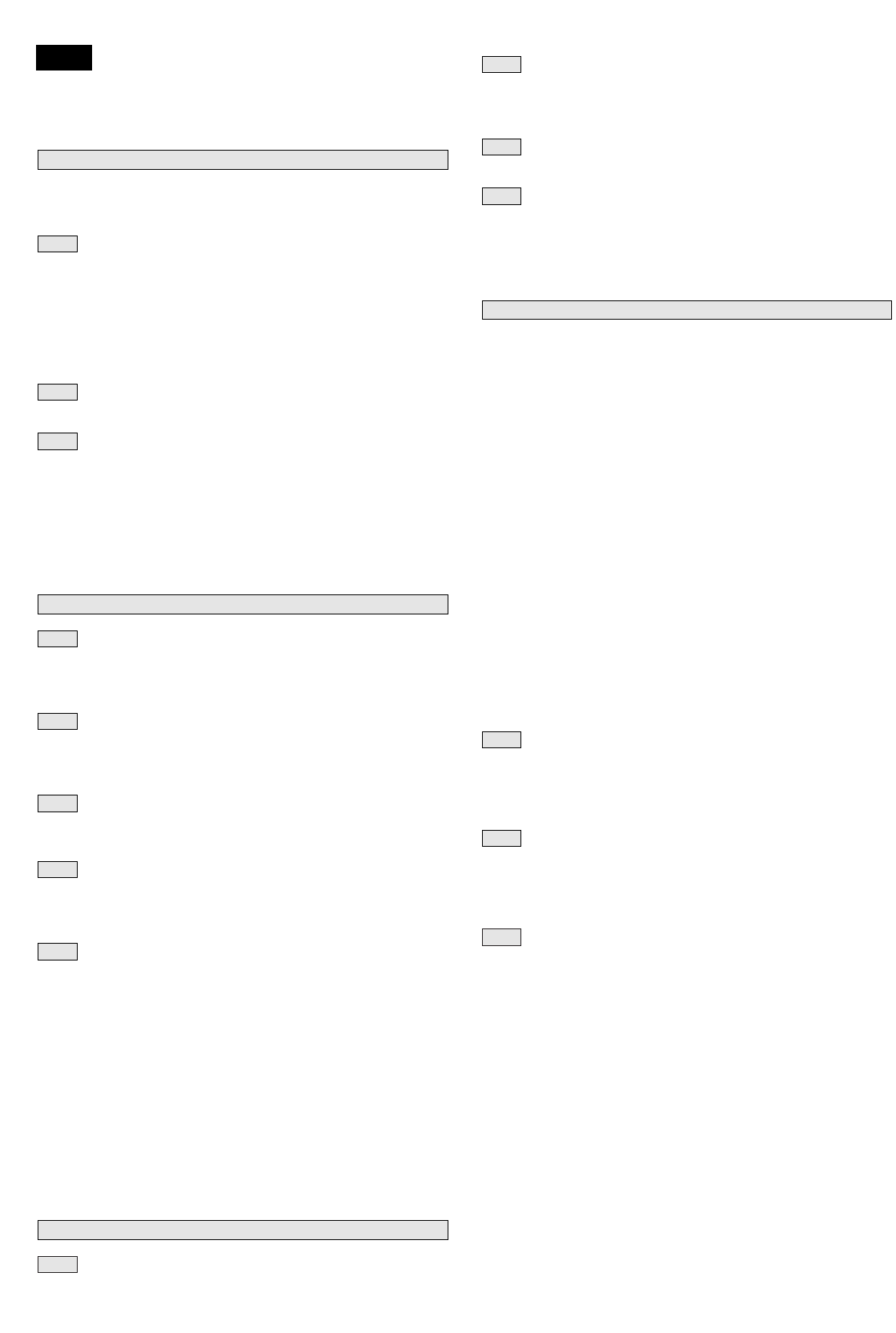
19
STANDARDS OF USE
For instructions regarding the engine and the battery (if
supplied), read the relevant manuals.
NOTE – The machine can be supplied with some of the
components already fitted.
Return the lower part of the handle, which is made
up of two pre-assembled elements (1), to its working posi-
tion and lock into place using the lower knobs (2). Attach
the upper part (3) using the screws (4) supplied, ensuring
that the spiral (5) of the starter cable is in the correct posi-
tion.Attach the control cables using the clips (6). By loos-
ening the knobs (2) the handle can be set at three different
heights.
Assemble the dashboard (1) following the steps
shown.
With the plastic part (11) upside-down, fasten the
frame (12) to the plastic part using the screws (13).
Insert the frame (12) into the sack (14) and attach the plas-
tic profile (15) with the help of a screwdriver, as shown in
the drawing.
Fit the edge of the cloth (16) right into the groove of the
plastic part (11), starting 5-7 mm from the ends.
The throttle (where fitted) is controlled by the lever
(1) and positioned as shown on the relative plate. Some
models have a fixed speed, and therefore no need of a
throttle (2).
The blade brake is controlled by the lever (1), which
should be held against the handle when starting and using
the lawnmower.The engine stops when the lever is
released.
In power-driven models, draw the lever (1) towards
the handle for forward movement. The lawnmower stops
moving forward when the lever is released.
The cutting height is adjusted using the levers (1).
The four wheels must be at the same height.
MAKE THIS ADJUSTMENT ONLY WHEN THE BLADE HAS
STOPPED MOVING.
The speed changer (if fitted) is controlled by moving
the lever to one of the four positions, marked as:
1 - 2 - 3 - 4
The move from one speed to another must be made with
the engine running and drive engaged.
IMPORTANT - Do not touch the speed changer when the
engine is stopped. This operation could damage the speed
changer.
NOTE - If the machine does not move forwards with the
control in position «1», it is enough to move the control to
«4» and then immediately return it to position «1».
Lift the stone-guard and attach the grass-catcher
(1) correctly as shown in the drawing.
3.1
3. GRASS CUTTING
2.5
2.4
2.3
2.2
2.1
2. DESCRIPTION OF CONTROLS
1.3
1.2
1.1
1. FINISH ASSEMBLY
GB
To start the engine, follow the instructions in the
engine booklet and then pull the blade brake lever (1)
towards the handle and give a sharp pull on the starter
cable knob (2).
The lawn will look better if it is always cut to the
same height and in alternate directions.
When you have finishing mowing, release the brake
lever (1) and disconnect the spark plug cap (2).
WAIT FOR THE BLADE TO STOP before carrying out any
type of work on the machine.
IMPORTANT – Regular, careful maintenance is essen-
tial for keeping the safety level and original perform-
ance of the machine unchanged in time.
Store the lawnmower in a dry place.
1) Wear strong working gloves during any cleaning, main-
tenance or adjustment operation on the machine.
2) Carefully clean the machines with water after each cut;
remove the grass debris and mud accumulated inside
the chassis to avoid their drying and thus making the
next start-up difficult.
3) The paintwork on the inside of the chassis may peel off
in time due to the abrasive action of the cut grass; in this
case, intervene promptly by touching up the paintwork
using a rustproof paint to prevent the formation of rust
that would lead to corrosion of the metal.
4) Should it be necessary to access the lower part, only tilt
the machine from the side shown in the engine hand-
book; following the relative instructions.
5) Do not drip petrol onto the plastic parts of the motor or
the machine to prevent damaging them and remove all
traces of spilt petrol immediately. The warranty does not
cover damage to plastic parts caused by petrol.
All operations on the blade should be carried out at
a specialized centre.
Note for specialized centres: Reassemble the blade (2) as
shown in the drawing and tighten the central screw (1)
using a torque wrench set to 35-40 Nm.
In power-driven models:
• adjust the tension of the belt with the nut (1) to get the
right measurement (6 mm).
• turn the adjusting nut (2) so that the wire (3) is slightly
loose and the lever (4) is idle.
The control cable must be adjusted if the difference
in speed between position «2» and position «4» is minimal
or nil.
NOTE - The adjustment must be made with the engine
switched off.
Gradually turn register (2) anticlockwise (so as to cause it
to extend) until control lever (1) has difficulty in reaching
position «4»; at this point turn the register clockwise by
about half a turn, to obtain optimal adjustment of the for-
ward speed, together with correct engagement of the four
speeds using control lever (1).
Should you have any doubts or problems, do not hesitate
to contact your nearest Service Centre or your Dealer.
4.3
4.2
4.1
4. ROUTINE MAINTENANCE
3.4
3.3
3.2


















